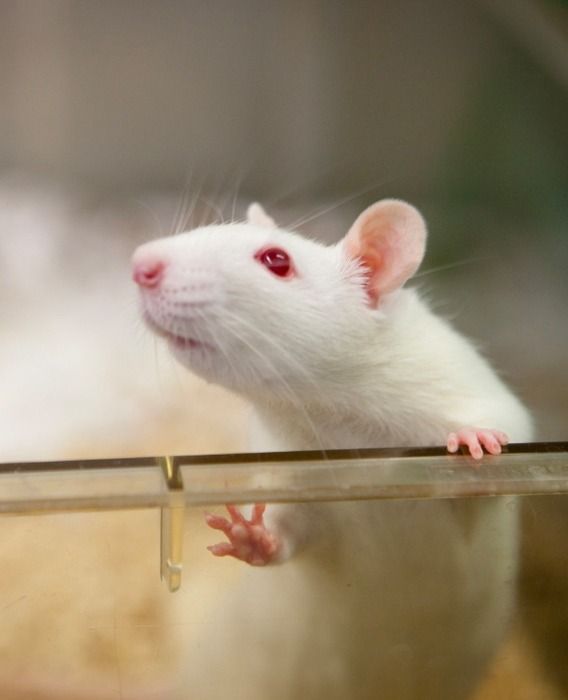All the little things that affect your animals' behavior
In behavioral research, even the smallest details can significantly influence the behavior of animals. Understanding these nuances is crucial for the accuracy of your data.
Posted by
Published on
Thu 01 Aug. 2024
Topics
| Behavioral Research | Mice | Rats |

In behavioral research, even the smallest details can significantly influence the behavior of animals. Understanding these nuances is not only crucial for ensuring the accuracy of your data, but also the welfare of your animals. In this blog we lay out some key factors that can affect animal, particularly rodent, behavior and tips on how to manage them effectively.
1. Handling techniques
When we talk about handling animals in a research setting, consistency and care are paramount. Handling is often the most direct interaction researchers have with their animals, and these interactions can significantly influence their behavior.
Consistency in handling
Why it matters
Variations in handling techniques can introduce stress, leading to behaviors that do not accurately reflect an animal's natural state. Stress responses can alter physiological and behavioral parameters, making data unreliable.
Best practices
Ensure the same person handles the animals using the same method every time. For example, scooping rodents with both hands instead of lifting them by the tail can reduce stress considerably. But also tunnel handling is becoming increasingly popular, where the tunnel serves as both cage enrichtment as well as a means of handling you animals. In general it is the consistent handling routines help animals get used to human interaction, reducing variability in behavior data. Research shows that consistent handling reduces stress-related behaviors and improves data reliability in studies of anxiety and stress in mice.
Minimizing stress
Why it matters
Stressful or too much handling can cause behaviors that do not represent the animal’s normal state, thus affecting the reliability of experimental results. Stress hormones like cortisol can affect both behavior and physiological responses.
Best practices
Handle animals gently and only when necessary. Use calm, smooth movements and avoid loud noises or sudden actions that might startle them. Regular, brief (and consistent) handling sessions can help animals become accustomed to human interaction without causing undue stress.
Handling time of day: keep it the same
The timing of handling and testing are also crucial for obtaining reliable behavioral data. Animals have natural rhythms and habits that must be respected to ensure valid research outcomes.
Why it matters
Animals have circadian rhythms that influence their behavior. Testing at different times can yield different results, affecting the reliability of data.
Best practices
Conduct experiments at the same time each day to reduce variability due to circadian rhythms. Consistency in testing times helps ensure that any observed behavioral changes are due to the experimental conditions rather than the time of day. Studies show that controlling for circadian influences improves the repeatability and accuracy of behavioral tests.

But also your handling routine, again going back to consistency, definitely matters
Why it matters
Establishing a routine helps animals become accustomed to handling, reducing stress over time and improving data consistency (Advance Research).
Best practices
Handle animals regularly but keep interactions short and consistent. This familiarization process can significantly reduce stress and enhance the reliability of behavioral observations . Consistent handling routines have been shown to reduce variability in behavioral tests such as the open-field.
Lastly there are the personal factors of the handler
Personal characteristics of the handler, including scent, appearance, and behavior, can subtly but significantly influence animal behavior. Attention to these details can improve research outcomes and animal welfare.
Why it matters
Animals, particularly rodents, have a highly developed sense of smell. Strong scents from perfumes, lotions, or even the handler's diet (or smoking habits) can affect their behavior.
Best practices
Avoid wearing strong scents and ensure hands are clean before handling animals, particularly when moving between rooms. Preferably use unscented soap and avoid fragrant products on testing days to minimize olfactory disruptions. Also, when moving between male and female rooms, consider doing all the work in the female rooms first before moving to the male room. Getting male scent in a female room could trigger a shift in their estrous cycle.
Attire and appearance
Why it matters
Changes in the handler's appearance, such as different clothing or hairstyles, could startle animals and affect their behavior.
Best practices
Wear consistent clothing when handling animals, preferably lab coats or other neutral, familiar garments (have a dedicated lab coat you can wear in the animal rooms). This consistency helps animals remain calm and reduces behavioral variability.

2. Environmental factors
Environmental conditions are crucial in shaping animal behavior. Factors like lighting, temperature, and noise can either promote natural behaviors or lead to stress and atypical responses.
Lighting
Why it matters
Animals have species-specific lighting preferences that affect their activity levels and stress responses. Lighting impacts circadian rhythms and can influence behaviors such as feeding, mating, and sleeping.
Best practices
Mimic natural light conditions as closely as possible. For nocturnal animals like rodents, dim lighting is essential to avoid stress and encourage natural behavior. Avoid abrupt changes in lighting, which can disturb the animals' circadian rhythms.
Additional insight
Bright TL (tubular fluorescent) light bars are known to cause stress due to high intensity and flicker effects, which are often undetectable to humans but can be perceived by animals. Natural light and adjustable LED bulbs are better alternatives, providing a fuller spectrum of light and reducing stress.
Temperature and humidity
Why it matters
Extremes in temperature and humidity can cause stress and impact animal behavior, leading to inconsistent data. These conditions can affect physiological processes like metabolism and thermoregulation.
Best practices
Maintain stable environmental conditions that fall within species-specific comfort zones. Make sure your temperature system works correctoy, regularly monitor and adjust if needed. But in this, consistency again is key. Maintaining optimal temperature and humidity reduces stress and enhances behavior predictability in lab animals.
Additional insight
Here are some of the species-specific temperature zones for commonly used animals in behavioral research
| Species | Thermoneutral zone (TNZ) | Optimal temperature range | Considerations |
|---|---|---|---|
| Mice | 26°C - 30°C (78.8°F - 86°F) | 20°C - 26°C (68°F - 78.8°F) | Mice are sensitive to temperature fluctuations due to their high surface-area-to-volume ratio. Temperatures below the TNZ may increase metabolic rates and food intake, while higher temperatures can lead to heat stress affecting reproduction and immune response. |
| Rats | 26°C - 30°C (78.8°F - 86°F) | 20°C - 24°C (68°F - 75°F) | Rats prefer slightly warmer environments than typical room temperatures. Deviations can cause changes in aggression and lethargy. Consistent exposure to non-optimal temperatures affects growth and reproduction. |
| Voles | 22°C - 28°C (71.6°F - 82.4°F) | 18°C - 22°C (64.4°F - 71.6°F) | Voles are less tolerant to cold stress, increasing metabolic rates. High temperatures can lead to heat stress and altered activity levels. |
| Fruit Flies (Drosophila melanogaster) | N/A | 20°C - 25°C (68°F - 77°F) | Fruit flies thrive within a narrow temperature range. Temperatures outside this range can delay development and reduce fertility. High temperatures speed up metabolism, affecting lifespan. |
| Zebrafish (Danio rerio) | 26°C - 28°C (78.8°F - 82.4°F) | 26°C - 28°C (78.8°F - 82.4°F) | Zebrafish are ectothermic; their body temperature matches water temperature. Lower temperatures slow growth, while higher temperatures affect breeding. |
Noise levels
Why it matters
Loud or unexpected noises can startle animals and alter their behavior, leading to stress and data variability. Chronic noise exposure has even been found to impact health and behavioral responses.
Best practices
Keep noise levels low and consistent. Implement soundproofing measures if necessary, and avoid noisy activities near the testing area to minimize disturbances.
Additional insight
In addition to the potential negative impacts of noise, it's worth mentioning that some labs intentionally play music in housing rooms. Music can have varying effects on different species, ranging from calming to stimulating. In some cases, playing specific types of music, such as classical or ambient soundscapes, may help mask sudden noises and create a more stable auditory environment. If using music in housing rooms, select calming and consistent soundtracks that do not have sudden changes in volume or intensity. Studies suggest that genres like classical music can reduce stress markers in some species .
Conclusion
Understanding and controlling the numerous factors that can influence animal behavior is essential for ensuring the accuracy and reliability of behavioral research. By paying attention to details such as handling techniques, environmental conditions, and the consistency of the handler's approach, you can minimize stress and variability in their subjects, leading to more reliable data and better animal welfare. Ethical and meticulous handling of animals not only enhances the quality of research but also upholds the principles of humane treatment.
Consistency seems to be the key in everything mentioned above. Now you just need a consistent and reliable way to collect your data. Take a look at the PhenoTyper for example, which gives you a controlled environment with tons of customization options.
Related Posts

Noldus Grant Assistance Program launched in North America

What you need to know about the CatWalk gait analysis method

